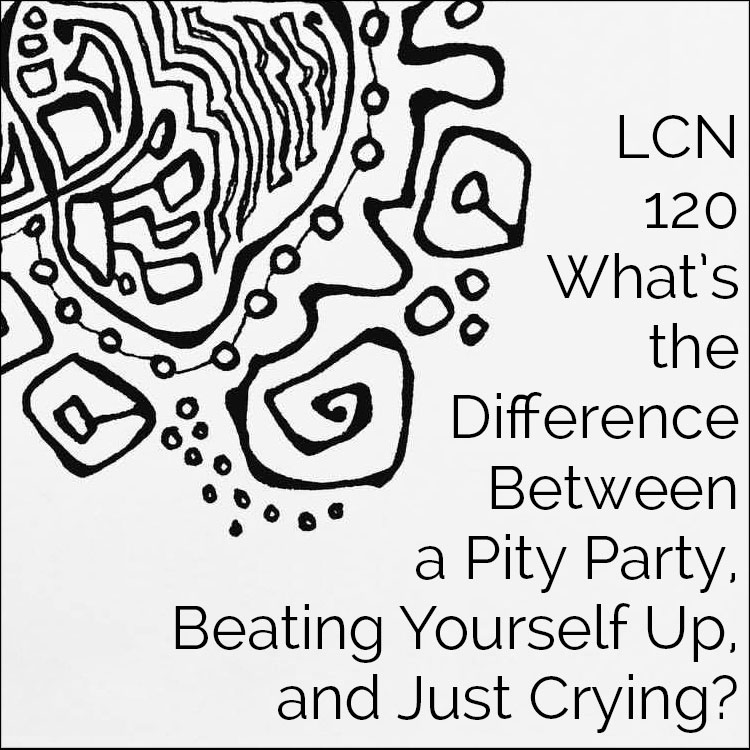
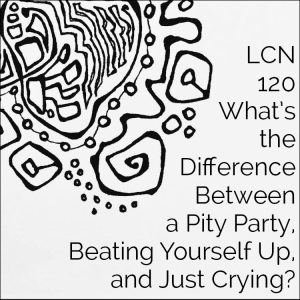 My week at Jazz Camp West this year was rough. I was hit with an unexplained depression that practically knocked me off my feet for the first four days.
My week at Jazz Camp West this year was rough. I was hit with an unexplained depression that practically knocked me off my feet for the first four days.
Who knows why? It doesn’t really matter.
What’s relevant here is that, because of this weird depression, I was a hair trigger for tears. Anything could, and would, set me off.
I felt like I spent most of the first half of camp trying to regulate my tears — because crying in public makes everyone else so uncomfortable, right? It was really no fun.
Then on Tuesday I got an opportunity to perform. I had exactly five minutes, and I decided to share my Creative Sandbox song (updated a bit from this version) — which is only about two minutes long — so I had about two minutes for an introduction to explain the song, which would still leave me some cushion to safely fit within my five minute allotment.
I skipped my morning classes so I could spent the time practicing in my tent — getting the introduction down, drilling myself on the ukulele — and I was as prepared as I could be on short notice.
And when my time came, the introduction went basically fine… and then I really had kind of a train wreck on the song. I just… really… blew it.
My fingers messed up. I sang the wrong words. It was a mess.
I felt horrible.
Dinnertime came right after the performance, so I had no opportunity to release my horrible feelings. So I went into the dining hall feeling shaky, and looked for a group of people that felt safe-ish…
And guess what happened?
That hair trigger for tears was still a hair trigger, so of course, I couldn’t hold those darn tears back. And those people I thought were safe-ish, were anything but.
A bunch of them started telling me, “You can’t beat yourself up!” Which I know came from an intentionally helpful place, but it was not helpful.
And one woman actually said something about a “pity party” with a scornful look on her face before stalking off.
And I can tell you that really pissed me off.
Now at the time, I was in the middle of some intense feelings, and I couldn’t think clearly enough to formulate a response. So this is my response.
The Difference Between a Pity Party, Beating Yourself Up, and Crying
When I was sitting at that table, trying to stuff my tears, while knowing that what I most needed was to crycrycry, I knew that I wasn’t beating myself up, and I wasn’t having a pity party. But I couldn’t in that moment articulate the difference between those things.
So what is the difference between a pity party, beating yourself up, and crying?
A pity party is “Oh, woe is me,” with no movement to resolve it or go forward. Sometimes a pity party is a necessary step. I don’t know why, but humans sometimes seem to need to wallow a bit before we can figure out how to move.
Beating yourself up is also no forward movement. It’s all about the past. “I can’t believe you did that, you idiot!” “How could you have…?” “What a stupid moron!”
When you cry, there may be elements of either of these things going on, for sure — I was certainly experiencing pity for my poor, bedraggled ego, and I was certainly frustrated with my performance.
But the biggest thing going on was simply a release of emotion, and this was where there was the biggest disconnect in the room at Jazz Camp.
Because I desperately needed to release those emotions! For me, in that moment, my tears were a healing. Crying was like draining pus from a wound — it was a way to release toxins and ultimately make me feel so much much better, think more clearly, and heal so much more quickly and cleanly.
But to everyone around me it looked messy and ugly and scary. To them, the crying didn’t look like healing from the hurt, it looked like the hurt itself. To them, crying looked like me beating myself up, or having a pity party.
The “Problem” with Crying
Crying is very triggering to people. When you see someone crying, it “restimulates” memories of when you cried, which was likely when you were hurt in some way. So when you see someone crying, you don’t tend to think, “Oh, isn’t that great — this person is healing from some trauma! Aren’t humans amazing that we have wonderful healing mechanisms?”
No, we think, “Omigod, someone is hurt! I want to stop the hurt!” Of course we do!
And because our brains are filled with mirror neurons, it makes us feel empathy. Basically, we feel really uncomfortable seeing someone cry.
So instead of encouraging them to use that amazing healing mechanism to cry themselves to betterness, in order to make ourselves feel less uncomfortable we try to get them to stop.
“Hush little baby, don’t you cry.”
But when we stop someone else from crying — “Don’t cry!” “Big boys/big girls don’t cry!” “I’ll give you something to cry about!” — it interrupts the body’s amazing healing mechanism. It’s not actually helping.
We might feel better, because the tears, which are triggering us, are no longer there, so it seems like everything’s okay.
We do this all the time, and we think we’re helping. But really we’re just trying to make ourselves feel less uncomfortable, because seeing someone else showing their pain is such a trigger!
And if their tears were interrupted before they were naturally cried out, it’s like sewing up a wound before cleaning out all the pus.
Gross, right? And really unhealthy.
Because that hurt never gets fully healed. It kind of gets stuck in their unconscious as a thorny knot of unhealed hurt. And that thorny knot of unhealed hurt is primed to grab onto other hurts, like a logjam in a river. So that anything that happens with the slightest bit of similarity to that earlier experience not catches on that thorny knot of unhealed hurt and triggers an unconscious reaction.
Now you react from a pattern of hurt, rather than from your clearest thinking.
The Mr. Rogers Way
Have you ever seen a little kid running around playing, fall down and bump her knee? Kid starts to cry, right?
If you say, “Crying’s for sissies,” or “I’ll give you something to cry about,” either the kid will cry harder, or the kid will shut up, but you’re sewing pus up in that wound.
But if you go over to that child, pick the kid up and say, “Ouch, you bumped your knee! That must’ve hurt. I’m going to sit here with you while you cry,” maybe the kid cries for 90 seconds, and then guess what? They’re off and running and laughing again.
All the kid needed was some attention and to let those hurt feelings out through some tears. The body’s natural healing mechanism.
That is how it works. Mr. Rogers understood this.
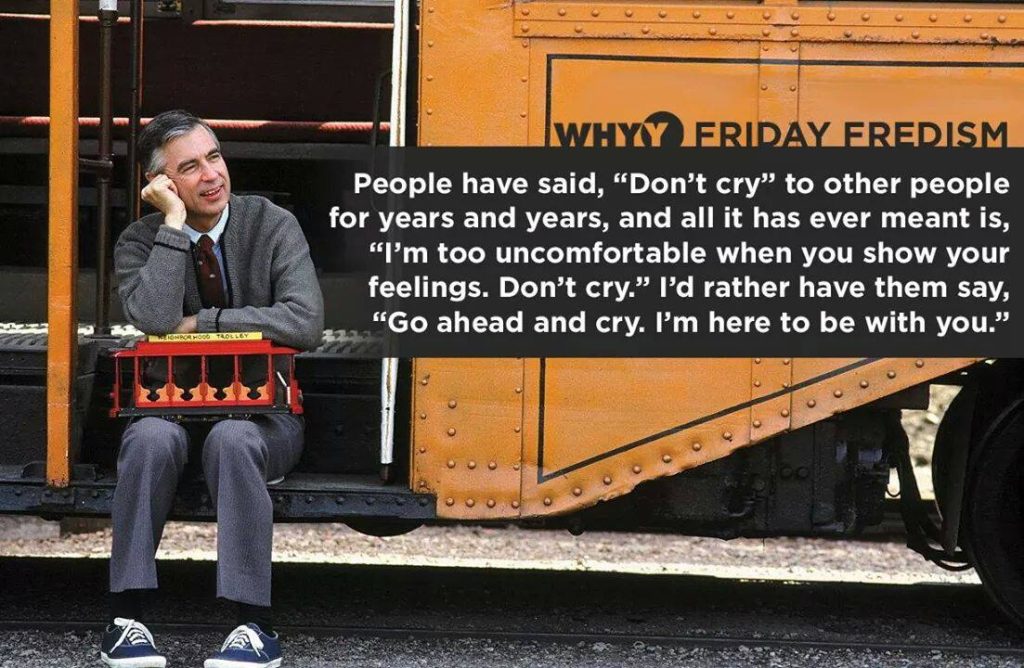
Crying is not beating ourselves up, nor is it a pity party. Unfortunately, most of the world is not clear on this concept, so it doesn’t feel safe to cry in public (even in a seemingly “safe” space like Jazz Camp West, which was founded by a therapist, and where crying is literally mentioned at the All Camp Meeting on the first day as an expected, normal part of the arc of the week).
What to Do?
So what do you do when you’re in a public space and you don’t feel safe, but you can’t keep the tears back?
First, seek out allies if you can, and then let them know what you need.
I assessed the people I knew at camp — who could listen in a way I needed. And when those people started giving me advice — which was not what I wanted at all — I thanked them, and gently told them that I really didn’t want any advice right now, I purely wanted to vent.
This is hard for people! Not everyone can listen without giving advice, so pick your listeners carefully.
And think about the gift you would be giving to be a listener to someone else.
As you go about your day, be on the lookout for people expressing strong emotions — like through tears, or it could be shouting to express anger, or shaking to release fear, or laughing to express joy or nervousness. Simply start to notice the different ways the body releases emotions.
And then notice what feelings it brings up in you when you see other people releasing emotions. Do you naturally want to stop them because it makes you feel uncomfortable?
Feelings are Transitory
Meanwhile, although this is hard to remember in moments of strong emotion, remind yourself that all feelings are transitory.
Onstage at Jazz Camp and at dinner afterwards I pretty much wanted to crawl into a hole. I was humiliated and ashamed that I’d made such a horrendous mess of things.
By the next day I still felt embarrassed, but the sting wasn’t quite so bad.
And now, a month later, the level of pain I feel barely registers.
That entire week of devastating depression and hair-trigger teariness is like a distant memory.
Feelings are transitory.
And when I’m able to have a big, ‘ol good cry, with a really good listener, whatever hurt is wanting to come out is less likely to stay stuck inside. I won’t have to operate on top of that hurt.
The feeling may not go away instantaneously (much as I might wish it to), but my body’s wonderful healing mechanism can process it through in its own good time.
I won’t get stuck in the no-movement place of a pity party, or beating myself up. Tears are fluid. Let them flow.
Something Cool
This week’s something cool is BookBub — a free daily email that notifies you about deep discounts on acclaimed ebooks. You choose the types you’d like to get notified about — with categories ranging from mysteries to cookbooks — and BookBub sends great deals in those genres to your inbox.
Enjoy!
Listeners Wanted!
Has the Live Creative Now podcast made a difference in your life? Would you like to be featured on the podcast?
I want to start sharing listener stories, so if you have a story of how listening to the podcast has changed your life for the better in some way — big or small — I want to feature you in a Listener Spotlight.
Here’s how it works:
1. Just log into iTunes and leave a rating and review. (If you don’t know how to do that, you’ll find step-by-step instructions at livecreativenow.com/itunes-review).
2. Then copy and paste what you wrote in your review into an email, and send it to me, along with why you want to be featured in a Listener Spotlight. How has Live Creative Now made a difference in your life? You can email me at livecreativenow.com/contact.
That’s it!
If I pick you for a Listener Spotlight, we’ll have a relaxed, fun conversation, and the recording of our conversation will be part of a future episode! How cool is that?
Want a creative kick start?
Check out my book!
What would change for you if you could totally revel in the joy of creating? You CAN, with The Creative Sandbox Way!
You’ll learn:
- Melissa’s 10 fool-proof guideposts that have helped thousands get joyfully creating.
- 5 reasons why creative play is good for you, AND for the world (it’s neuroscience, baby!)
- Why “I’m not creative” is always a lie, and how to bust it.
- How to turn creative blocks into friends.
AND you’ll get creating right in the book itself.
 “It’s one part field guide, one part creative practice—and I loved it. The Creative Sandbox Way is an adventure packaged as a book.”
“It’s one part field guide, one part creative practice—and I loved it. The Creative Sandbox Way is an adventure packaged as a book.”
~Chris Guillebeau
NYT best-selling author of The Happiness of Pursuit and The $100 Startup
Hear ye, hear ye! This is to serve as official notice that all links to anything for sale, be it books or courses, are likely to be affiliate links. What this means is that if you click through said links and make a purchase, although it won’t affect the price that you pay, a few coins will jangle into my coffers, enabling me to buy a packet of hard gluten-free biscuits to feed myself and my husband for another day, or perhaps a pen with which to create some artwork. Or perhaps they will contribute toward paying a fraction of my web hosting bill, so that this blog and podcast can continue to exist. Thank you kindly for your attention.
Thanks for Listening!
Thanks so much for joining me this week. Have some feedback you’d like to share? Leave a note in the comment section below!
If you enjoyed this episode, please share it using the social media buttons you see at the bottom of the post.
Also, please leave an honest review for Live Creative Now on Tunes!
If you’d also like your voice to be heard on the show, leave your question as a voice message right here.
And finally, don’t forget to subscribe to the show on iTunes to get automatic updates.
Subscribe in iTunes | Subscribe via Stitcher
Now go get creating!

PS — Pssst! Know someone who might benefit from seeing this today? Pass it on!

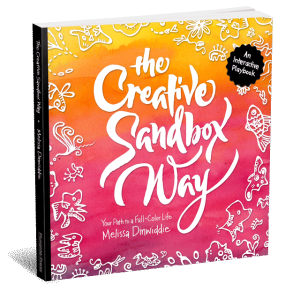

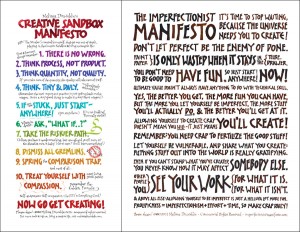 10 Tips to Bust a Creative Block: Download Your FREE Poster!
10 Tips to Bust a Creative Block: Download Your FREE Poster!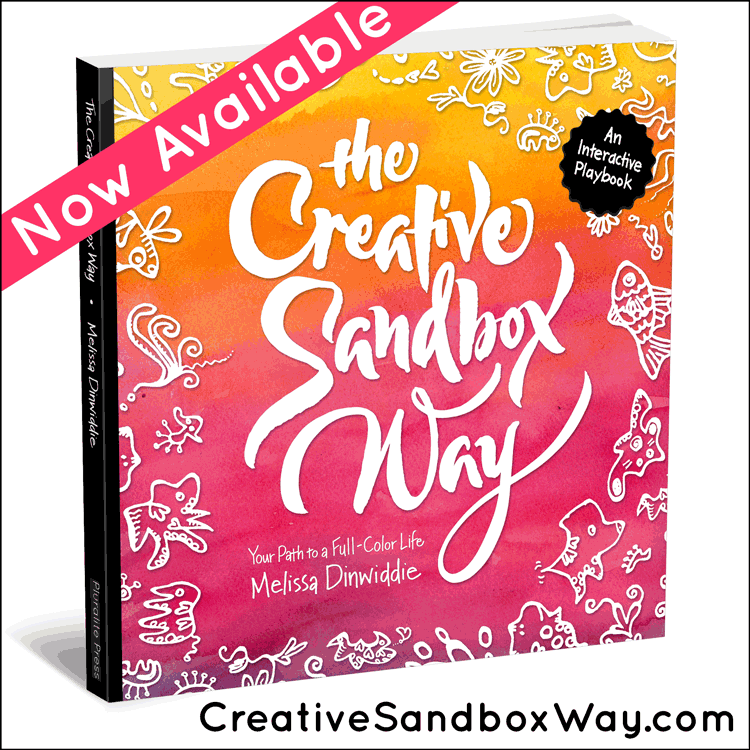
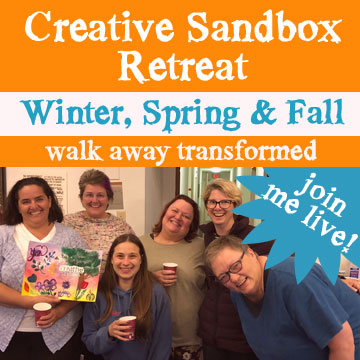
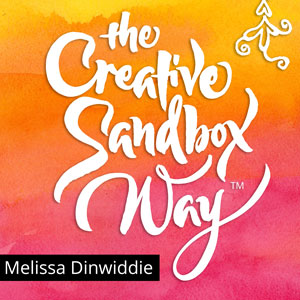

This resonates so much. As the crier, but also from when I was a massage therapist – treatments, especially those that worked on mind-body connection, would sometimes bring up strong emotions in clients, which often prompted tears. I always found it a great privilege. My message in those moments, is that this is old stuff, the thorny knots. Don’t get caught up in it, don’t try to stop it; acknowledge it and let it out. I try to take my own advice now, and to allow my daughter (2) to experience her emotions without shutting her down – it’s hard though!
Beautiful, Lucinda. I agree, it does feel like a great privilege to bear witness to someone else’s strong emotions. And yes, it is *hard*! Especially when we care deeply for someone else. Because of course we want them to be free from suffering… Witnessing suffering, even when you know that the release of emotions is actually healing, is hard. <3